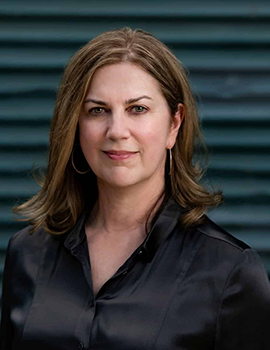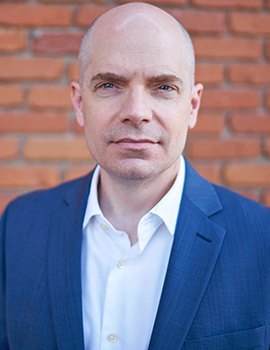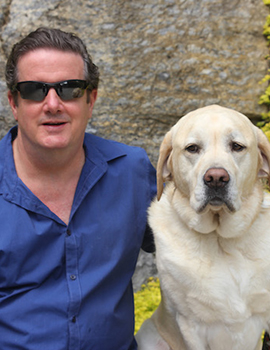

Features The Past, Present, and Future of Thriller Villains
The Past, Present, and Future of Thriller Villains
A Conversation with Three Bestselling Authors
By Guy Bergstrom
Without a villain, there is no thriller. No story, no conflict, no reason to care.
Because thrillers are about a threat that needs to be stopped. That threat has to come from somewhere. The more interesting the villain, and the threat, the better the story.
And that story poses tough questions, including perhaps the ultimate question for our hero, and for ourselves: what’s worth dying for?
First, our authors:
MEG GARDINER
Meg Gardiner is the #1 New York Times bestselling author of sixteen novels. Her thrillers have won the Edgar Award and been summer reading picks by The Today Show and O, the Oprah magazine. Called “Hitchcockian” (USA Today) and “nailbiting and moving” (Guardian), her books have been translated into more than 20 languages. Her latest title is Heat 2, co-authored with Michael Mann. Gardiner’s UNSUB series features FBI profiler Caitlin Hendrix, and UNSUB won the 2018 Barry Award for Best Thriller.
CHRISTOPHER FARNSWORTH
Christopher Farnsworth is a bestselling novelist, screenwriter, and journalist. His work has been published in more than a dozen countries, translated into nine languages, and has been a finalist for the Goodreads Choice Awards. Christopher’s work has also appeared in the Los Angeles Times, the New York Post, the New Republic, Washington Monthly, and on The Awl. Born and raised in Idaho, he worked as an award-winning investigative and business reporter before selling his first script, The Academy, to MGM.
BOB MAYER
Bob Mayer is a New York Times bestselling author, graduate of West Point, and former Green Beret. He is one of the top multi-genre bestselling authors in the world, with more than 80 books published and in excess of 6 million books sold, including the #1 series The Green Berets, Area 51, and Atlantis.
THE PAST
Who is the first thriller villain to really stick in your memory, and why?
M.G.: I’ll give you two: The Demon from The Exorcist and Randall Flagg from The Stand.
I’m defining “thriller” broadly, to mean suspenseful, pulse-pounding novels that held me rapt as I flipped the pages. I was a kid (shh!) when I read The Exorcist, and Pazuzu, the demon that possesses young Regan, terrified me from the get-go. He—it—is otherworldly, deadly not only to the body and mind but the soul, plus sly, treacherous, knowledgeable, primal.
Flagg, the dark man, the walkin’ dude, was like a slow poison injected into my veins. Seductive, ruthless, charming, cruel, and eager to eat your spirit. Both these villains gave me gooseflesh.
C.F.: The first thriller that really stuck with me was Shibumi, and I was always interested in how Trevanian made the villains in that piece so powerful and yet so mundane. Diamond, thanks to his role in the Mother Company, literally has the world at his fingertips. He can make a phone call and wipe out a village with a missile strike, and no one would ever question him. And yet, he seems like a mere functionary, a bureaucrat with a slightly higher pay grade.
I’m sure Trevanian was making some point about the banality of evil there, but it’s clear that in many other novels, Diamond would be the good guy and Nicholai Hel would be the terrorist villain.
B.M.: Steiner in the Eagle Has Landed. He is a noble warrior sent on a suicidal mission. His backstory makes you empathize with him. And his downfall occurs because of a sacrificial act by one of his men.
How do you think villains evolved from the early days to the present?
M.G.: Villains always reflect the fears and anxieties of the time in which they’re written. They arise from society’s id, and headlines, myths, and, at the worst, from propaganda and stereotypes.
The form villains take will always reveal something about their era. I can only hope that they are portrayed with depth and psychological acuity, and that they feel like real human beings…really awful human beings who cannot be turned from their deadly objectives.
B.M.: I think we see more villains who are also the protagonists. Such as in Fight Club. This is very hard to pull off.
THE PRESENT
Are there cliches or tropes you see in thriller villains today that just need to end? I see a villain with a British accent and at least one facial disfigurement in every Bond movie.
C.F.: I am about done with the idea of the brilliant psychopath serial killer. Most serial killers are sad little men (almost always men) who live at the margins of society and kill because of their own crippling sense of inadequacy. Most psychopaths are not master criminals but people with poor impulse control stealing or lying or cheating because they think they’ll get away with it.
I am more interested now in the villains who commit their crimes because they don’t see them as crimes at all, or because they have been painted into a corner and believe that tunneling down deeper is the only way to escape.
M.G.: If the albino assassin monk hadn’t run his course, I would have beaten him to smithereens with a hymnal.
Which villains in thriller novels right now stick out the most to you & why?
M.G.: The Quinn Colson series by Ace Atkins has some of the greatest snakes in the genre. Johnny Stagg, Fannie Hathcock—they’re cunning, ambitious, and part of the community. Stagg owns a Mississippi truck stop with a strip joint out back. Fannie ruthlessly runs that business and the criminal enterprises that come with it. They’re society’s shadow side, socially unacceptable but burrowed like ticks into the fabric of the system, eager to welcome everyone into their corruption.
C.F.: I’m always impressed by Joe R. Lansdale’s villains. They are real to me in a way that other bad guys are not. When they’re cruel, violent, or vicious, it’s because they’ve gotten away with it forever, and it works for them. They don’t see people as fellow human beings—they see them as obstacles or opportunities. They’ve never faced consequences, and they find the idea that they might insulting. They’re perfect for our time, because both conscience and consequences seem to be increasingly absent these days.
B.M.: The father in The Road is striking. He is saving his son in a post-apocalyptic world but at what price? Eventually he even sacrifices himself to keep his son alive. So, he is also the hero.
What do you try to do when cooking up a new villain for one of your books?
B.M.: I do the villain’s plan. This is the fun part of writing. Because the villain’s plan usually initiates the action of a novel. And the better the plan, the better the protagonist must be to overcome it.
Remember to Google all the nasty stuff to make the villain’s plan on a friend’s computer, not your own. Just in case.
I also want my villain to have an authentic motivation that is believable to the reader for doing whatever it is they are doing. The best thrillers are where the line between the villain’s goal and the protagonist’s is very thin and their motivations are equally admirable.
It’s hard to write villains you fundamentally disagree with, but it’s necessary. When I wrote Robert E. Lee in my Duty, Honor, Country series, I had a hard time agreeing with his choices, but I understood where he came from.
M.G.: Think of something awful they want, then try to understand why they want it so bad. What made them that way? How do they justify it? In China Lake, Chenille Wyoming wants a child and revenge on a high school flame, so she takes his little boy. She calls it God’s will.
It feels like we’re in an era where more stories are villain versus villain. Or villains become so popular (Darth Vader, Hannibal Lecter, Sylar in Heroes) they’re switched to a hero.
M.G.: I believe redemption is possible, and we should rejoice at it. And I believe redeemed bad guys should atone, big time, before they’re forgiven. Darth Vader got off easy. Killing the emperor, saying, ‘sorry, Luke,’ for the decades of mass murder, then dying—nope. That doesn’t make up for the force chokings and the younglings and Alderaan, dude.
Someone who is redeemed through a vast act of self-sacrifice, okay. Or spending a lifetime making amends—yes. Just letting them get away? Not so much.
I am actually more annoyed by the trend of thriller heroes—and especially heroines—who are so edgy that they’re extraordinarily messed up. Drugs, promiscuity, self-destructiveness, alienation from family, cruelty, avarice, thievery, corruption…why do I want to root for you?
THE FUTURE
Who’s on the cutting edge right now with truly interesting & different villains?
M.G.: Taylor Swift. “It’s me—hi, I’m the problem, it’s me… I’ll look directly at the sun but never in the mirror. It must be exhausting always rooting for the antihero.”
B.M.: People like to use AI. I’m not a fan of that because it’s humans who program it. An interesting question I’ve seen explored is what if the programmer of a robot is a psychopath? Thus, the real villain is the programmer. My last Area 51 book has a villain like that.
However, an interesting villain is a thing that has no feelings and is sort of inevitable. It doesn’t care that it’s a villain. In fact, it’s the natural order of things. A pandemic can be a villain. Then you personify it. A runaway train. A natural disaster. I really liked the story of The Crazies where the hero, Timothy Olyphant, is desperately trying to get out of the strike range of the nuke called in to stop a viral outbreak. We empathize with him, except…
He succeeds, but at the very end we see another outbreak where he escaped to. There’s even a government guy in his black suit telling him—hey, everyone makes us out to be the bad guys in this situation but we’re actually the good guys trying to get containment. In this case the hero’s goal, escape, is actually bad.
How do you think thriller villains can—and should—evolve further? What would you like to see more?
B.M.: I think books can be a force for change. An easy target is the rich. I mean, how much money is enough? I do consulting on survival and Area Studies and was asked by an ultra-wealthy person how he could secure his compound of a disgusting number of acres in Montana. I told him of the inverse rule of security—the more people you have, the less secure you are. I also told him that in a situation where he would need his security people to man their posts, the only way to do that is make them part of his ‘family.’ No amount of money is going to work. They have to have the personal commitment to the security. Of course, that didn’t sink in. For him, money was everything. Except when it wasn’t.
M.G.: What would I like to see? Blood-curdling female villains who look absolutely ordinary, live seemingly unexceptional lives, and, behind their book club, Cub Scout den mother facades, are vortexes of sucking evil. Huh, I, think I have myself a new antagonist to write about.
The Past, Present, and Future of Thriller Villains
Credit for pixabay shot: Image by Sam Williams from Pixabay
- Thriller Heroes: Love, Betrayal, and Death - February 22, 2024
- The Past, Present, and Future of Thriller Villains - October 12, 2023
- International Thrills: Catherine Ryan Howard - August 1, 2022



